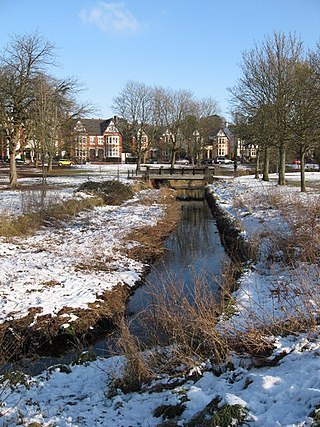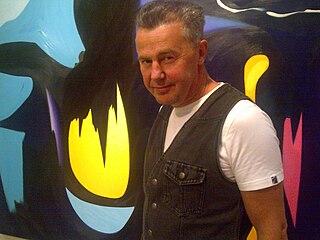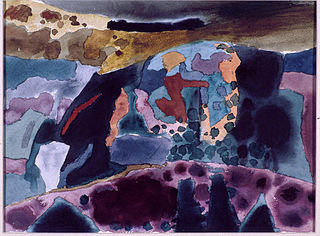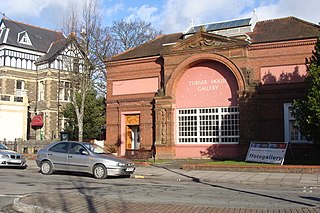
Cardiff Bay is an area and freshwater lake in Cardiff, Wales. The site of a former tidal bay and estuary, it is the river mouth of the River Taff and Ely. The body of water was converted into a 500-acre (2.0 km2) lake as part of a UK Government redevelopment project, involving the damming of the rivers by the Cardiff Bay Barrage in 1999. The barrage impounds the rivers from the Severn Estuary, providing flood defence and the creation of a permanent non-tidal high water lake with limited access to the sea, serving as a core feature of the redevelopment of the area in the 1990s.

Roath is a district and community to the north-east of the city centre of Cardiff, capital of Wales. The area is mostly covered by the Plasnewydd electoral ward, and stretches from Adamsdown in the south to Roath Park in the north.

Grangetown is a district and community in the south of Cardiff, capital of Wales. It is one of the largest districts in the south of the city and is bordered by Riverside, Canton and Butetown. The River Taff winds its way through the area. Adjacent to the city's Cardiff Bay area, Grangetown is experiencing a period of gentrification and improvements in its infrastructure. Its population as of 2011 was 19,385 in 8,261 households. One of the "five towns of Cardiff", the others are Butetown, Crockherbtown, Newtown and Temperance Town.

The music of Cardiff has been dominated mainly by rock music since the early 1990s with later trends developing towards more extreme styles of the genre such as heavy metal and metalcore music. It, along with the nearby music scene in Newport, has brought a number of musicians to perform or begin their careers in South Wales.

Edwin Seward (1853–1924) was an architect based in Cardiff, Wales.

Michael Gustavius Payne is a Welsh figurative painter. He paints primarily in oils and is influenced by mythological themes within a contemporary context. During his early exhibiting career he was known as Michael Payne, before he began using his full name. Since late 2012 he has dropped his first name and now uses the shorter Gustavius Payne.

Martyn Jones is a British contemporary painter who works from his studio in Cardiff, Wales.
Ffotogallery is the national development agency for photography in Wales. It was established in 1978 and since June 2019 has been based in Cathays, Cardiff. It also commissions touring exhibitions nationally and internationally. Its current director is David Drake. From 2003 to 2019 Ffotogallery used Turner House Gallery in Penarth as its gallery.
Shani Rhys James MBE is a Welsh painter based in Llangadfan, Powys. She has been described as "arguably one of the most exciting and successful painters of her generation" and "one of Wales’ most significant living artists". She was elected to the Royal Cambrian Academy of Art in 1994. In the 2006 New Years Honours she was appointed Member of the Order of the British Empire (MBE) for "services to art".
Made in Roath is an annual arts festival that takes place every October in Roath, a neighbourhood just adjacent to the city centre of Cardiff, Wales. The event showcases art, music, performance, literature and food in a variety of venues including peoples' homes. It is organised by the tight-knit community in Roath.
Rosemary "Ray" Howard-Jones was a prolific Welsh painter best known for her impressionistic seascapes and paintings of the coastline of Wales, particularly of the areas around Skomer and Marloes.

Mary Lloyd Jones FLSW is a Welsh painter and printmaker based in Aberystwyth. Her works are multilayered and use devices that reflect an interest in the beginnings of language, including early man-made marks and the ogham and bardic alphabets. She has exhibited across Wales and internationally.

Turner House Gallery is an art gallery in Penarth, near Cardiff, Wales.

Frank Roper was a British sculptor and stained-glass artist who undertook commissions for churches and cathedrals across Wales and England.

The Old Library is a Grade II* listed building in Cardiff, Wales. It is located in the centre of the city at the northern end of The Hayes. Originally the Cardiff Free Library, it was used as the city's Central Library until it was replaced in 1988. It has been used for other purposes since that time and is currently the home of the Cardiff Story museum and Menter Caerdydd, a community-based Menter Iaith organisation which works to raise the profile of the Welsh language in Cardiff.

Evan Charlton (1904–1984) was a British artist who painted surrealist landscapes and interiors.
Nerys Ann Johnson was a Welsh artist and art curator.
Claudia Jane Herington Williams is a British artist known for her paintings, often large colourful portraits. Although born in England, Williams has spent the majority of her career painting in Wales.

Mike Tooby is an independent curator and researcher based in Cardiff, Wales. His interests lie in integrating the practices often separated in curating in the arts and heritage settings: research, display, promotion, participation and learning. His own practice centres on curating in collaborative or site-specific contexts, where negotiating and celebrating relationships with audiences are at the core of projects.















